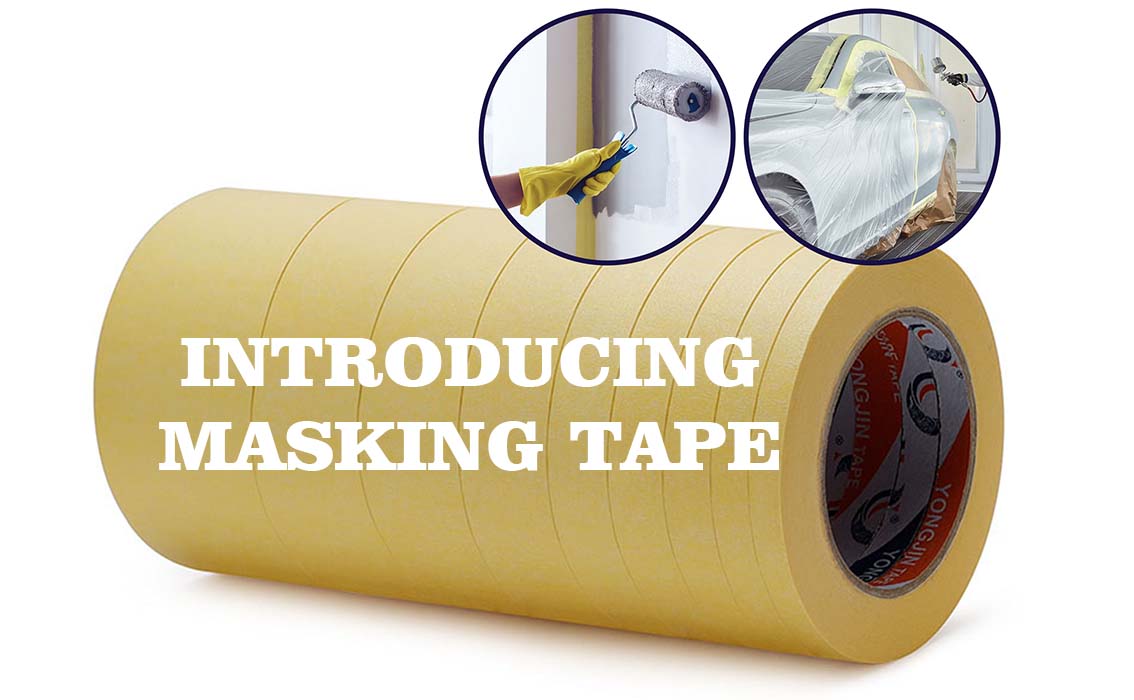
What is Masking Tape?
Masking tape is tape that is designed to stick instantly to any surface to protect against overspray and provide clean paint lines. Depending on the type of backing and application where the tape is used, masking tape serves as protection for the applying of coatings, the bundling of components, the coverage of cracks, and the connecting of surfaces.
As a critical part of industrial processes where the focus is on exposing a select portion of a surface and covering surfaces where treatment should be avoided, masking tape is essential and critical. E-coating, liquid painting, and powder coating processes are demanding, stressful, and necessitate high performance tapes with an adhesive that can adhere to difficult substrates and be temperature and chemical resistant but provide easy and clean removal.
The three factors that determine the strength of a masking tape are cohesion, adhesion, and tack, characteristics that are tested using a variety of methods. Adhesion refers to how strong masking tape and a surface bond while cohesion refers to how the molecules of the adhesive attract and hold to each other.
Tack is the measure of the grab or stickiness of masking tape when no pressure has been applied and how quickly masking tape forms a bond. It is an aspect of masking tape that is its most important property. A loop tack test measures the necessary force required to remove tape once it has made contact with a surface without the application of pressure. An increase in the amount of force indicates the tackiness of the tape.
A simple method for measuring the tackiness of masking tape is the rolling ball method where tape is placed on an incline with its sticky side up. A ball is released at the top of the incline and allowed to roll down to the tape. The distance that the ball is able to roll after reaching the tape determines the tape's tackiness.
Several factors determine the best type of masking tape for an application. Some tapes have properties and characteristics to meet the needs of specific applications and environments while others have particular types of adhesion.
Tape width and thickness are the factors that need to be considered since narrow tapes can be used for masking tight spaces, small areas, and corners while wider tapes are used to cover larger areas and provide more protection.
Tack is the property of an adhesive that allows it to stick to a surface upon contact with the surface and is the stickiness of a material. It is the property that allows adhesives to form a bond with the surface of another material briefly or under pressure. An implicit aspect of an adhesive is its ability to separate from a surface cleanly without residue.
The choice of the adhesion of a tape is dependent on several factors the primary of which is the application where the tape will be used. For DIY painting, the adhesion of tape is not a critical concern. In industrial uses of tape, there are more factors to consider especially when the tape is part of a coating process, bundling of products for shipping, or applying industrial grade paints to planes and automobiles.
When choosing masking tape for home use, the selection process depends on whether the tape is for packing and storage or for painting and trimming. The process of selection gets more complicated when choosing masking tape for production and manufacturing, which require more robust and dependable materials.
If you have any questions on any of our products or services, one of our branded packaging advisors is standing by to assist. Want to know more about custom packaging options? Please call us at 020-3482-0056 or contact us via email yongjin@gzyjjd.com



